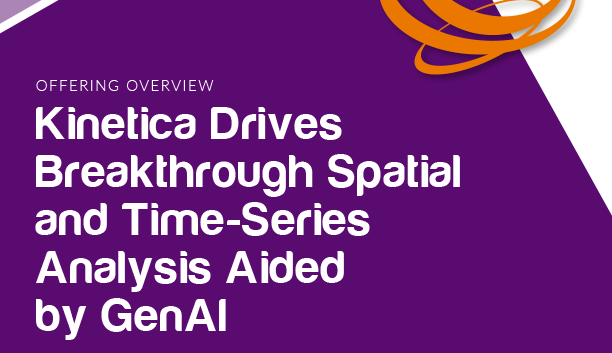Architecture
Architected for Performance at Scale
Kinetica is a distributed, vectorized, memory-first, columnar database with tiered storage that is optimized for high speed and performance – particularly on streaming data.
What's under the hood?
Kinetica has been uniquely designed for fast and flexible analytics on large volumes of changing data with incredible performance.
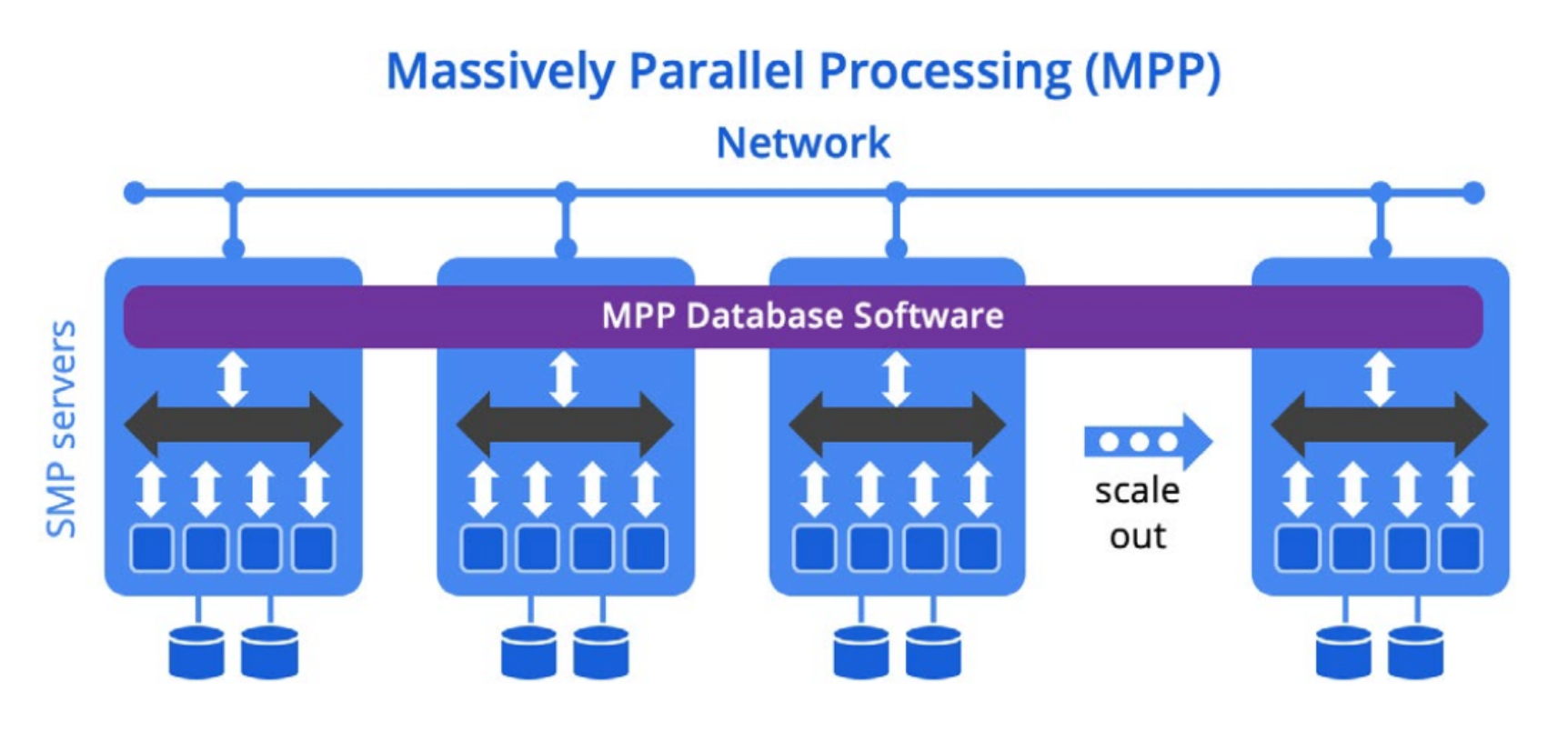
Scale-out Architecture
Kinetica has a distributed architecture that has been designed for data processing at scale. A standard cluster consists of identical nodes run on commodity hardware. A single node is chosen to be the head aggregation node.
A cluster can be scaled up at any time to increase storage capacity and processing power, with near-linear scale processing improvements for most operations. Sharding of data can be done automatically, or specified and optimized by the user.
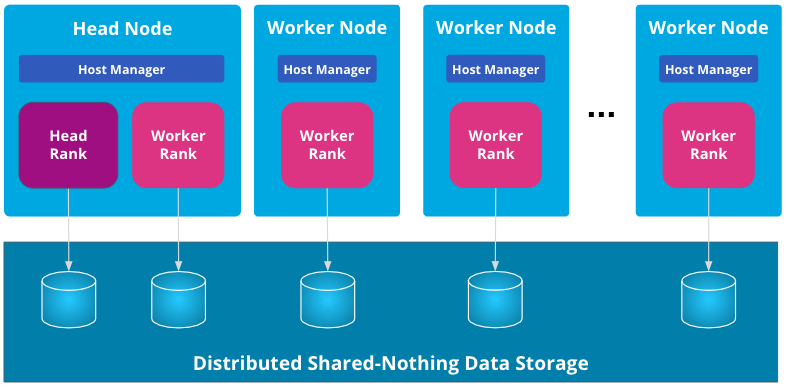
Distributed Ingest & Query
Kinetica uses a shared-nothing data distribution across worker nodes. The head node receives a query and breaks it down into small tasks that can be spread across worker nodes. To avoid bottlenecks at the head node, ingestion can also be organized in parallel by all the worker nodes. Kinetica is able to distribute data client-side before sending it to designated worker nodes. This streamlines communication and processing time.
For the client application, there is no need to be aware of how many nodes are in the cluster, where they are, or how the data is distributed across them!
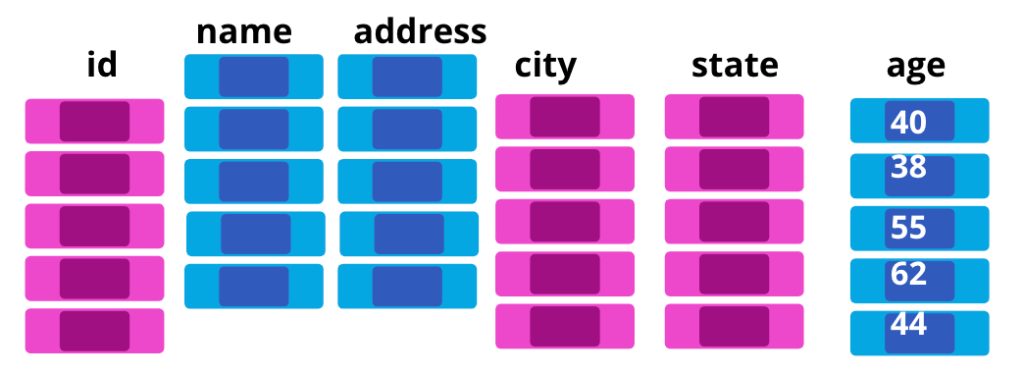
Column Oriented
Columnar data structures lend themselves to low-latency reads of data. But from a user’s perspective, Kinetica behaves very similarly to a standard relational database – with tables of rows and columns and it can be queried with SQL or through APIs. Available column types include the standard base types (int, long, float, double, string, & bytes), as well as numerous sub-types supporting date/time, geospatial, and other data forms.
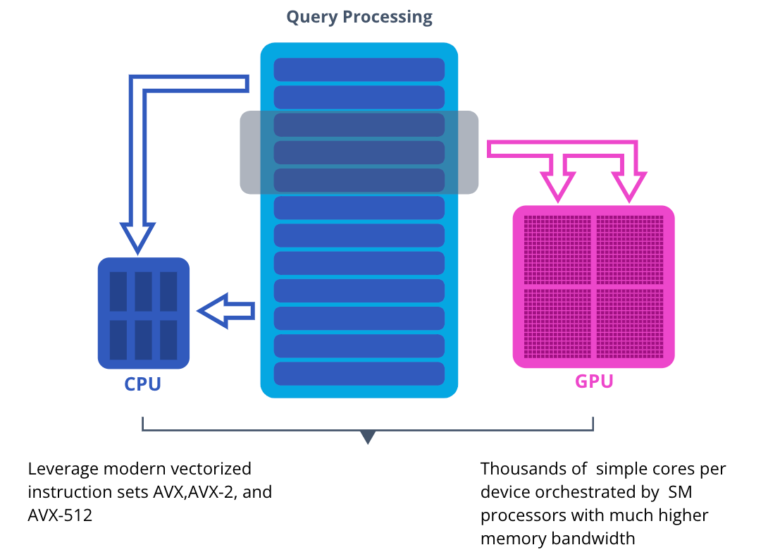
Vectorized Functions
Vectorization is Kinetica’s secret sauce and the key feature that underpins its blazing fast performance.
Advanced vectorized kernels are optimized to use vectorized CPUs and GPUs for faster performance. The query engine automatically assigns tasks to the processor where they will be most performant. Aggregations, filters, window functions, joins and geospatial rendering are some of the capabilities that see performance improvements.
Memory-First, Tiered Storage
Tiered storage makes it possible to optimize where data lives for performance and cost. Recent data (such as all data where the timestamp is within the last 2 weeks) can be held in-memory, while older data can be moved to disk, or even to external storage services.
Kinetica operates on an entire data corpus by intelligently managing data across GPU memory, system memory, SIMD, disk / SSD, HDFS, and cloud storage like S3 for optimal performance. Kinetica can also query and process data stored in data lakes, joining it with data managed by Kinetica in highly parallelized queries.
Performant Key-Value Lookup
Kinetica is able to generate distributed key-value lookups, from columnar data, for high-performance and concurrency. Sharding logic is embedded directly within client APIs enabling linear scale-out as clients can lookup data directly from the node where the data lives.
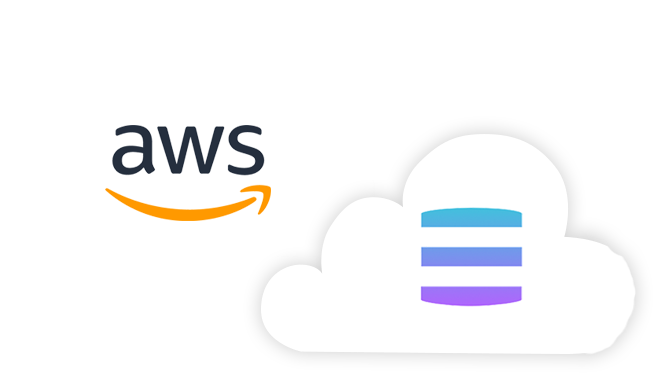
On Premise, Self-Managed or Kinetica Cloud
Kinetica can be deployed and scaled on your own hardware, or deployed into a cloud environment. KAgent may be used to automatically provision instances as desired and link several clusters of instances together for high availability.
Kinetica is also available as a managed service on AWS or fully managed in Kinetica Cloud. Try Kinetica in the Cloud for Free
Interact with Kinetica through SQL, APIs and Connectors
Kinetica integrates well with popular BI tools and application development platforms.
Real-Time Intelligence
Kinetica has broad support for SQL interaction with a mature suite of SQL functionality. This makes it easy for analysts to be productive quickly.
SQL Query Support »

Converged Analytics
Kinetica combines time-series, spatial, and graph capabilities into a unified database available through a SQL & Postgres compatible interface. Over 130 geospatial functions, geo-joins, graph solving and matching makes detecting patterns on fast moving financial data easier and faster.
Lower TCO, Faster to Deploy
Kinetica’s vectorized capabilities enable analysts and engineers to analyze and deploy systems quicker than ever. Vectorized algorithms allow for simpler data structures, which means less time engineering the data, more flexibility for exploring the data, and lower compute costs.
Evolved to Meet the Demands of the Modern Enterprise
Scale Out
Work with petabytes of data at speed with Kinetica’s memory-first, fully distributed architecture. Kinetica prioritizes and manages data across VRAM, RAM, disk, and cold storage and can utilize external tables to use data in HDFS, S3 and Azure.
Cell-Level Security
Advanced data access controls let you define dynamic obfuscation, redaction, and access rules down to the column level. Kinetica works with industry standard external authentication and identity systems like LDAP, Active Directory and Kerberos.
High Availability
Eliminate single points of failure and recover gracefully. Kinetica offers node and process failover for in-cluster resiliency, and multiple clusters may be grouped in a ring resiliency to spread data and ensure eventual consistency.
Administration
Kinetica’s administration, installation, and configuration management tools give users an intuitive way to provision cloud hardware, configure cluster security, add/remove nodes, data backup and monitor cluster health.
Related Resources
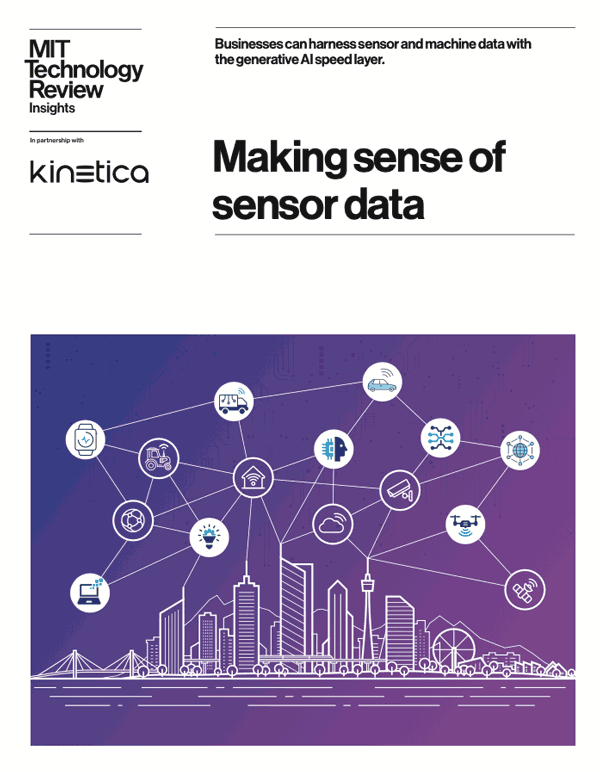
Try Kinetica Now:
Kinetica Cloud is free for projects up to 10GB
Talk to Us!
The best way to appreciate the possibilities that Kinetica brings to high-performance real-time analytics is to see it in action.
Contact us, and we’ll give you a tour of Kinetica. We can also help you get started using it with your own data, your own schemas and your own queries.

